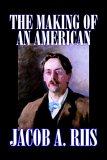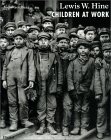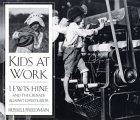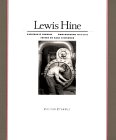With the immense changes taking place through the nineteenth century due to increasing industrialization, the flight from the land and the tides of immigration the disparities in society were clear. These were highlighted in the reformist writings of Charles Dickens (1812-1870) in Great Britain both through his novels and the weekly periodical
Household Words that he founded in 1850 and which was incorporated into
All the Year Round in 1859. This popular and reforming periodical continually attacked the degradations of the poor and injustice. Between February 1837 and April 1839 Dickens published monthly parts of the novel
Oliver Twist in the magazine
Bentley's Miscellany; popular magazines were widely read and plight of poor orphans left to suffer or work in wretched conditions was brought to the attention of the public.
In France
Émile Zola (1840-1902), in his twenty
Rougon-Macquart novels set in the French Second Empire (1852-1870), also highlighted the conditions of the working and middle classes as did Giovanni Verga (1840-1922) in Southern Italy. Artists such as Gustave Doré (1832-83) showed the appalling slums of London with images that harked back to those of the 1730's in
The Rake's Progress by William Hogarth (1697-1764).
Social and political thinking was being molded by events; in 1848, the
Year of Revolutions, the Communist Manifesto of Karl Marx and Frederick Engels was published. It was a period when power and wealth was in the hands of a few and the vote, where it existed at all, was restricted to men of property. Social inequalities, exploitation and abuses were commonplace in the societies where photography was becoming established and it is in this context that we need to appreciate the photography of the age. Socio-political theory, literature and art provided intermediates for understanding social issues but photographs showed the grim reality.
Some of the earliest users of photography used it as a means of documenting social ills as a way of informing the upper classes of society about the needs of the poor - in 1866
Thomas Annan (1829-1887) was commissioned to record alleys and dismal slums for the
Glasgow Improvement Trust and these were published in the
Old Closes and Streets of Glasgow (1878). Also in Scotland Archibald Burns was commissioned by
Edinburgh's City Improvement Trust to photograph the buildings of the closes of the old town prior to their demolition in 1871.
| Early examples of using photography to provide a social commentary |
Photographic prints have the ability to inform the higher classes of society about the living conditions of the less fortunate poor and homeless. By the 1860s the wretched decaying quarters of cities were revealed and social remedies were required and this became a political objective.
- Glasgow, Scotland
Glasgow Improvement Trust - Thomas Annan
- Edinburgh, Scotland
Edinburgh‘s City Improvement Trust - Archibald Burns
- Paris, France
Recording the architecture prior to the rebuilding of Parisien roads following the plans of Baron Georges-Eugène Haussmann - Charles Marville
- New York
Newspaper journalist - Jacob Rees
The examples shown have a mixed effect upon a modern audience - they show the cramped alleys and poverty but at the same time there is a misplaced nostalgia for a world that has gone. | | [Checklist] | Click on image for details
[Copyright and Fair Use Issues] |
|
Towards the end of the nineteenth century in the United States
Jacob Riis (1849-1914) and
Lewis Hine (1874-1940) were committed to social change. When
Jacob Riis published his first book,
'How the Other Half Lives' on the overcrowded New York slums in 1890 which contained seventeen halftone photographs and a further nineteen hand drawings they were damning statements on societal ills. The journalist and novelist Stephen Crane (1871-1900) published
Maggie: A Girl of the Streets in 1893 and the following year he wrote the article
Experiment in Misery when he dressed as a bum and spent a night in a flophouse.
How the Other Half Lives: Studies Among the Tenements of New York (Penguin Classics)
Jacob A. Riis; & Luc Sante (Introduction) |  |
|
| |
The Battle with the Slum
Jacob A. Riis |  |
|
|
The Virtues of the Vicious : Jacob Riis, Stephen Crane and the Spectacle of the Slum
Keith Gandal (Author) |  |
|
| |
The Making of an American
Jacob A. Riis (Photographer) |  |
|
|
Later
Lewis Hine traveled through the USA as an investigator and a photographer for the
'National Child Labor Committee' (NCLC) and his photographs were an impetus in promoting legislation to restrict child labor. To gain access to factories
Hine pretended to be a fire inspector or a salesman as owners had no desire to have proof of their actions, which although legal were morally unjustifiable. The
Keating-Owen Child Labor Act of 1916 was the first attempt but subsequent rulings, by powerful industrial lobbies, prevented its effectiveness and it was not until the
Fair Labor Standards Act was passed by Congress on 25th June 1938 that minimum ages for the employment of children could be enforced. It was through the efforts of
Lewis Hine that society was forced to recognize the injustices and eventually to address them with appropriate laws.
The importance of these photographs is highlighted in a letter that Owen Lovejoy (former director of the NCLC - National Child Labor Committee and Associate
Director of the American Youth Commission) wrote to Lewis Hine on 21 July 1938:
(excerpt) […] "Beginning in 1905 with your first service to the National Child Labor Committee when you traveled this country from end to end discovering and exhibiting examples of types of children and youth in various forms of labor on through to the more humane days when the littlest ones were emancipated and you and I both felt we might turn our attention in another direction, you would have a pictorial document of rare interest and one which no one can duplicate. In my judgment the work you did under my direction for the National Child Labor Committee was more responsible than any or all other efforts to bring the facts and conditions of child employment to public attention. The evils inherent in the system were intellectually but not emotionally recognized until your skill, earnestness, devotion, vision and artistic finesse focused the camera intelligently, sympathetically and effectively on social problems involved in American industry.
Cordially yours, Owen R. Lovejoy"
[Cited in: Kaplan, Daile (ed). 1992, Photo Story: Selected Letters and Photographs of Lewis W. Hine (Smithsonian Institution Press ), p. 110] | | [Checklist] | Click on image for details
[Copyright and Fair Use Issues] |
|
Lewis W. Hine: Children at Work
Vicki Goldberg |  |
|
| |
Kids at Work: Lewis Hine and the Crusade Against Child Labor
Russell Freedman (Author); & Lewis Hine (Photographer) |  |
|
|
Photo Story: Selected Letters and Photographs of Lewis W. Hine
Lewis Wickes Hine; Daile Kaplan (Editor); & Berenice Abbott |  |
|
| |
Lewis Hine: Passionate Journey: Photographs 1905-1937
Karl Steinorth (Editor); Anthony Bannon; Marianne Fulton (Editor); & International Museum of Photography at George Eastman House |  |
|
|
Photojournalism has developed into a respected academic discipline and universities teach both the practical and the ethical aspects of it as a business. Until the camera became a consumer item with the work of
George Eastman (1854-1932) it was largely a pastime of the well-to-do (
Jean-Gabriel Eynard (1775-1863),
Leslie Hamilton Wilson (1883-1968),
Jacques-Henri Lartigue (1894-1986) it took photographers of social conviction to document the conditions of the less fortunate.

